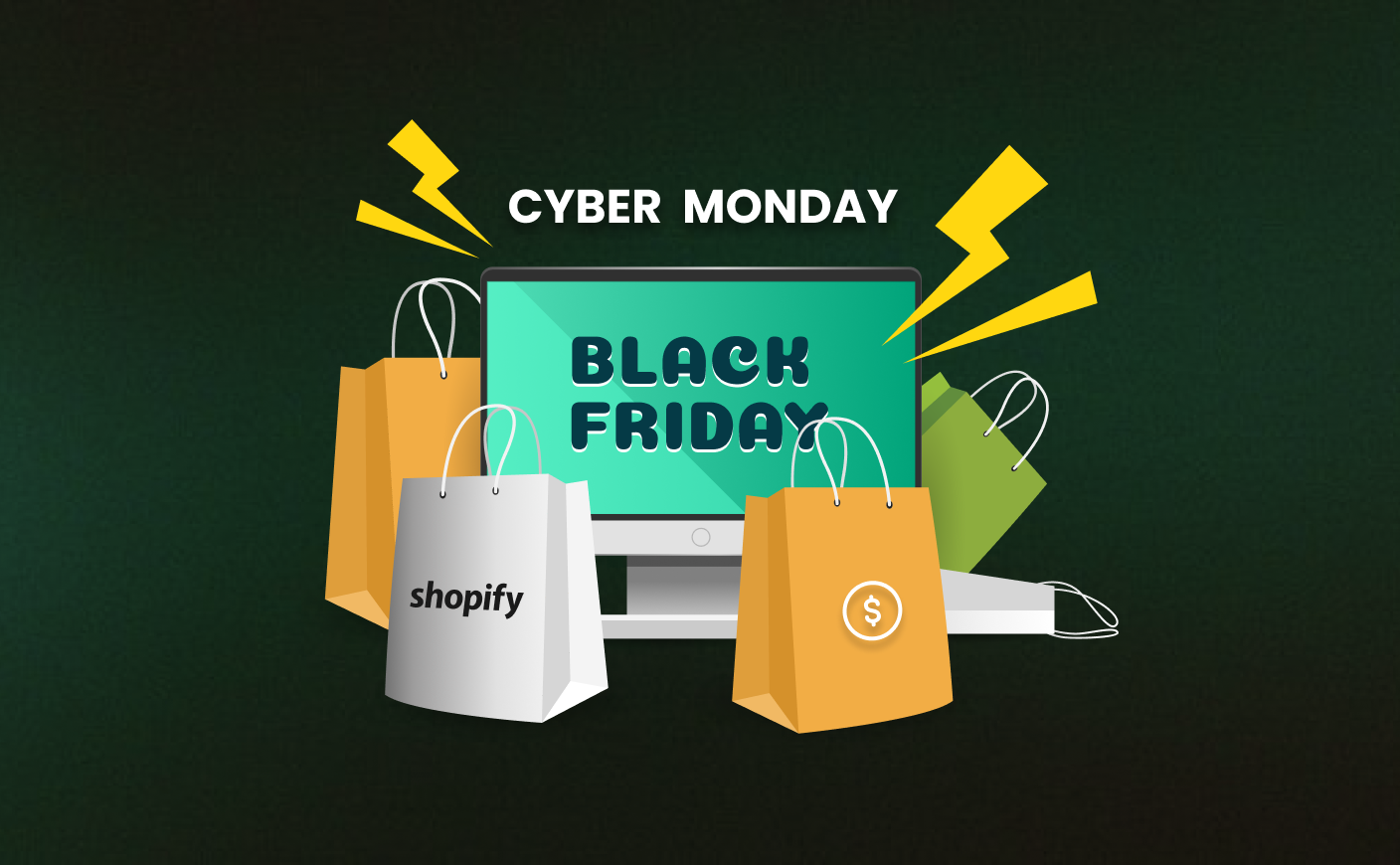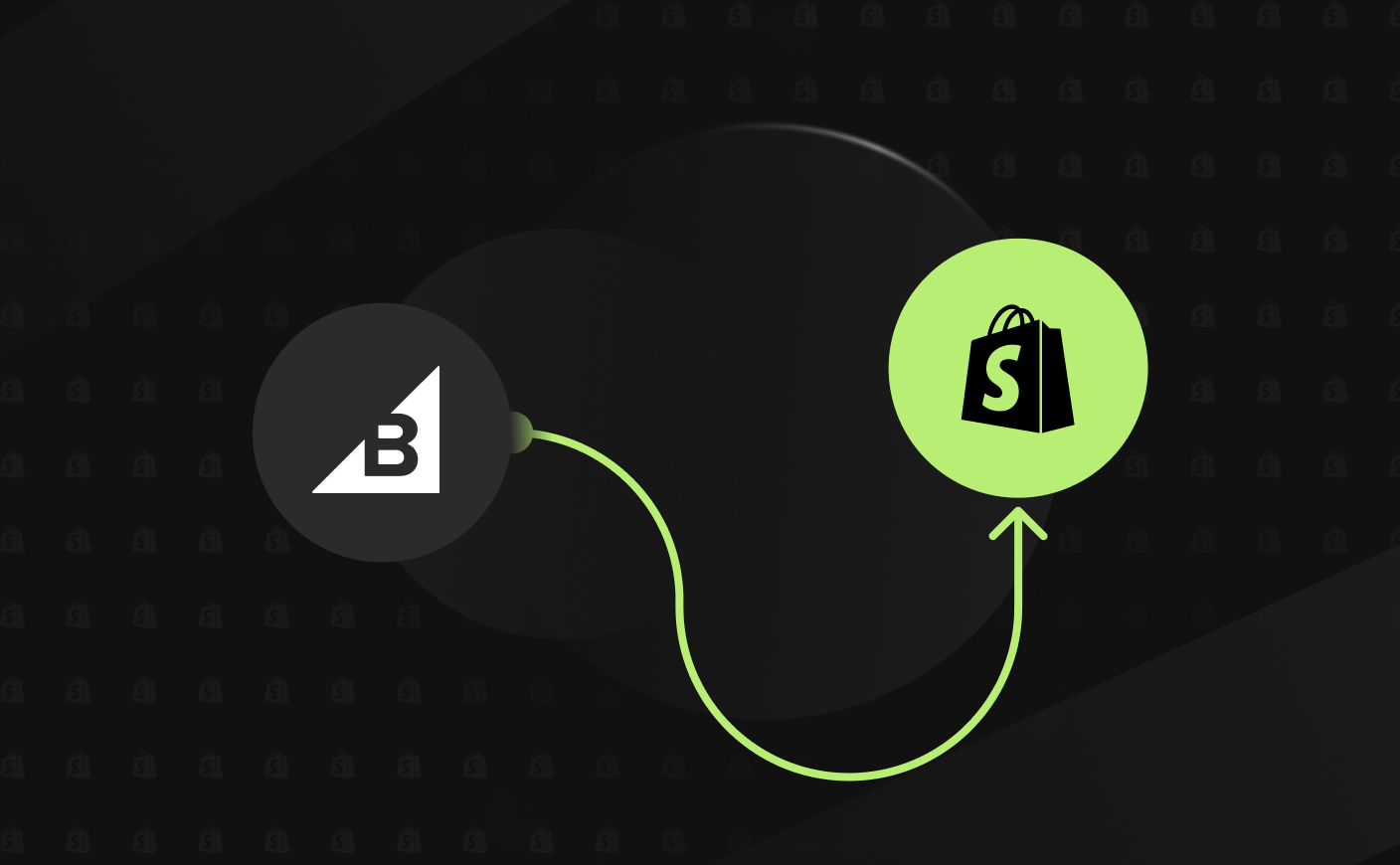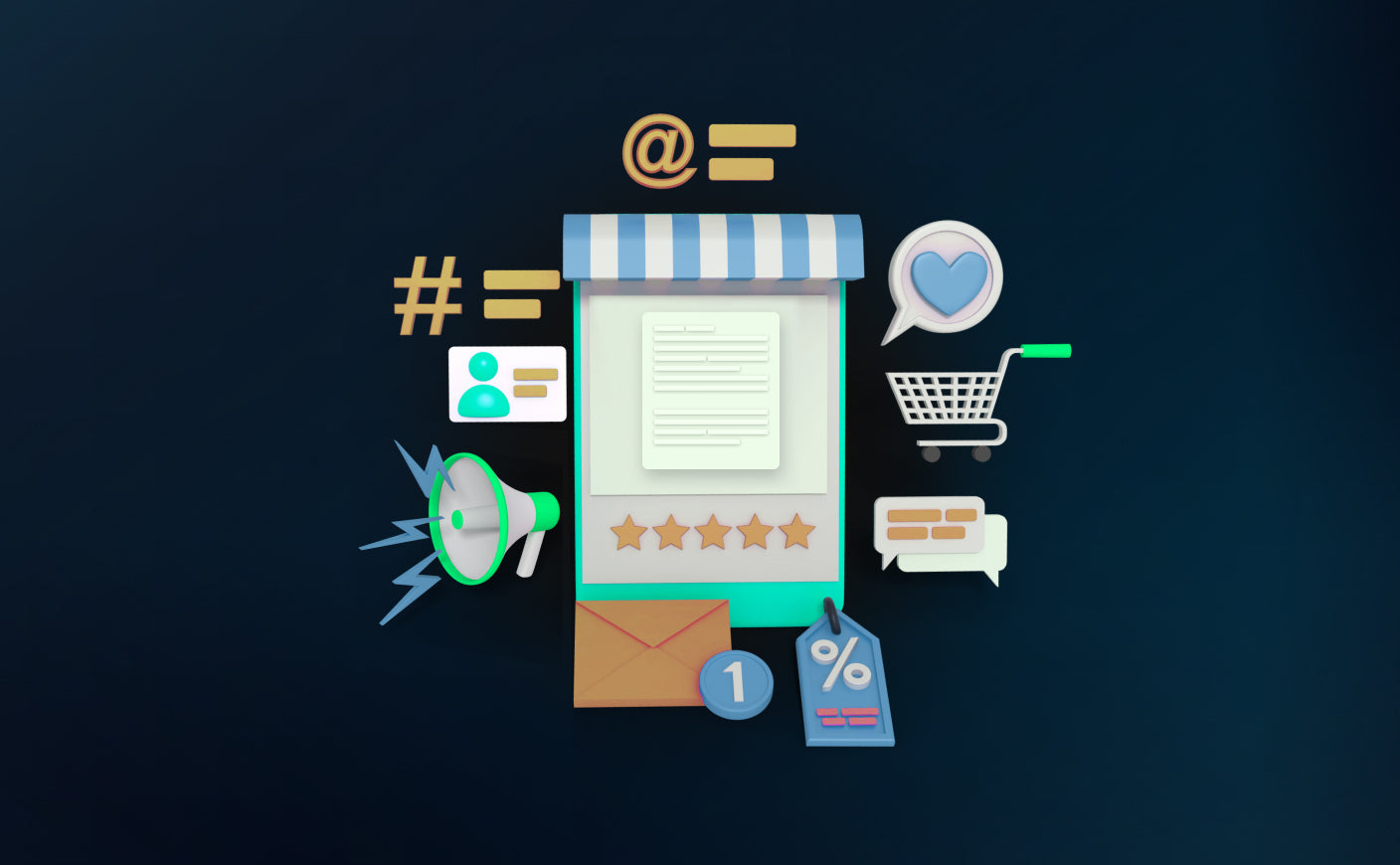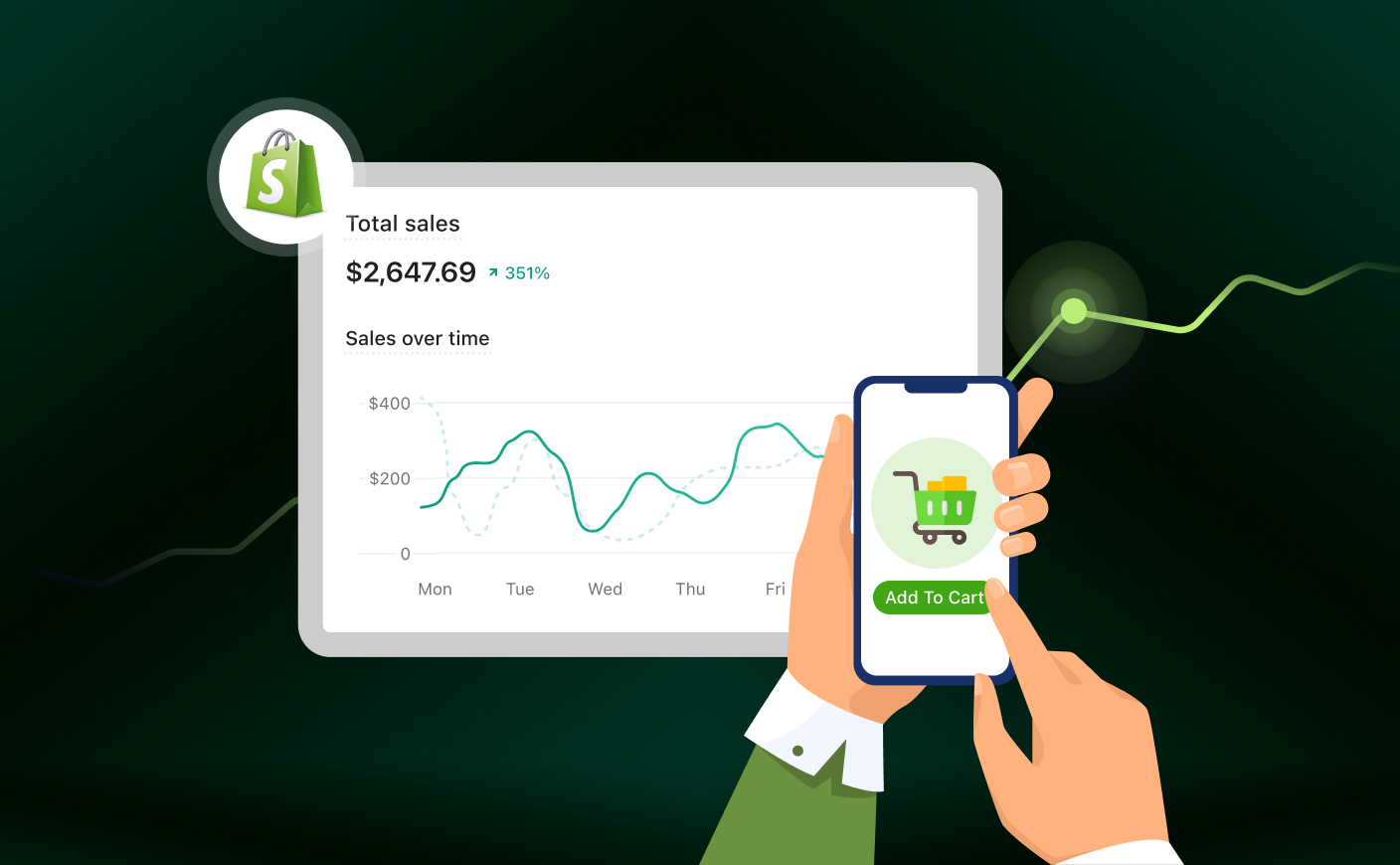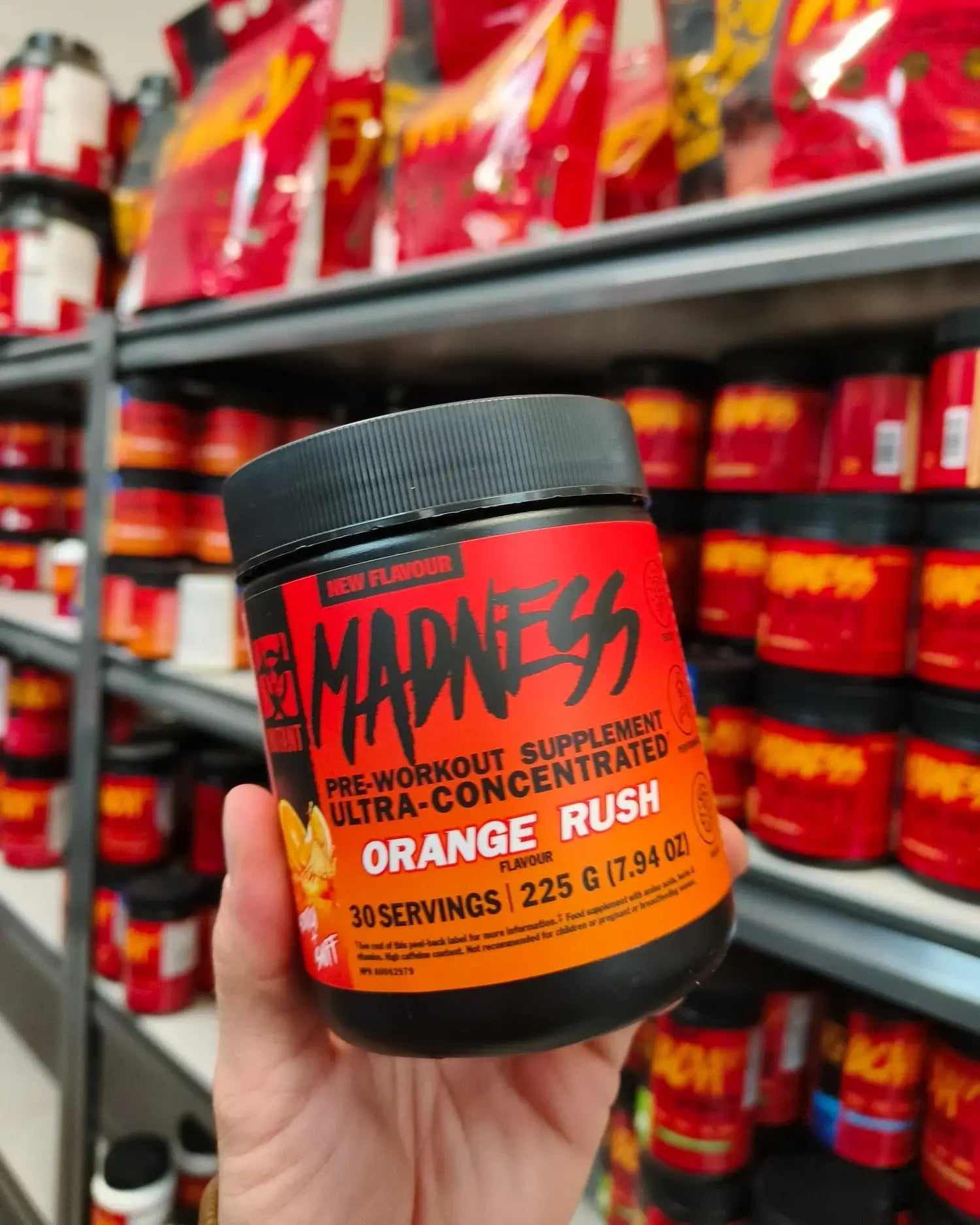Steal These Shopify SEO Agency Hacks for #1 Ranking! - CrawlApps
SEO
SEO Agency
shopify SEO Agency

What if getting your Shopify store to the #1 spot is not just a distant dream - but a real, repeatable strategy?
At CrawlApps, we have quite literally cracked the Shopify SEO code - a result of countless experiments, deep understanding of Shopify’s core , and staying three steps ahead of what everyone else is doing.
After working with hundreds of brands, our SEO strategists have discovered a set of unconventional moves that quietly drives insane results - without following that same old tactics that other agencies recycle.
If the goal is to turn a Shopify store into a traffic magnet while the competition is still figuring out what happened, let’s jump straight in.
Rethinking Shopify SEO – Beyond the Basics

It is no secret that conventional SEO just doesn’t cut it anymore.
Keyword stuffing, spraying generic backlinks across the web, and hoping for the best? Those days are long gone - especially for Shopify stores who are competing in a dynamic environment.
Today, search engines aren’t just scanning for keywords. They’re getting smarter, reading between the lines, and prioritizing real user intent. Google’s algorithms are now deeply tied to E-E-A-T — Experience, Expertise, Authoritativeness, and Trustworthiness. Simply tweaking meta descriptions won’t build that kind of credibility.
At the same time, Shopify itself is evolving. AI-driven search, hyper-personalized shopping experiences, and instant mobile optimization are shaping how customers find (and trust) brands. Stores that cling to outdated SEO tactics risk becoming invisible — while those who adapt can ride the next big wave of organic traffic growth.
What is the CrawlApps philosophy?
Most store owners miss out on one truth - SEO isn’t about chasing algorithms. It’s about understanding how they think.
That’s the CrawlApps mindset—don’t just market to people, design every element of the store to make sense to both users and search engines. Because when Google sees a store that’s technically sound, user-first, and content-rich? It pays attention.
It starts by flipping the perspective.
Instead of guessing what might work, think like a search engine:
- Is the content genuinely helpful?
- Is the structure clean and crawlable?
- Does the store load fast, look great on mobile, and guide users to what they need without friction?
Every hack, tweak, and tactic is filtered through that lens — aligning with Google’s priorities while delivering an experience shoppers actually enjoy.
But none of this happens by chance.
Behind the scenes, it’s all about testing. Constantly. Every hack shared in this guide is the result of dozens of experiments run inside Shopify’s ecosystem.
What works for a fashion brand might flop for a B2B industrial store.
That’s why iteration is everything. It’s not about finding a one-size-fits-all trick — it’s about building a flexible SEO machine that keeps learning and evolving.
This isn't a theory. It’s the exact philosophy that powers the wins behind CrawlApps’ top-performing clients.
Also read: Custom integrations a Shopify Plus development agency can build.
Shopify SEO Agency Hacks You Should Know About In 2025
Let us talk a look at all the tactics that you can implement in your store to get #1 ranking in Google.
Hyper-Targeted Keyword Clustering with AI

#1 Semantic Keyword Webs
Traditional keyword research used to be simple: find a few high-volume terms, sprinkle them around, and wait for traffic. That approach barely scratches the surface now — especially when Google’s understanding of language has evolved way past exact matches.
Today, it’s all about intent and context.
That’s where semantic keyword webs come in — a smarter, AI-powered way to find and group keywords based on what users actually mean, not just what they type.
Here’s the process to implement this in real life:
Start with a handful of seed keywords
Think about the core topics customers already care about. For example, a store selling vegan sneakers might start with “vegan sneakers” as a seed.
Feed those into AI-driven tools
Platforms like MarketMuse, Surfer SEO, or even custom NLP (Natural Language Processing) scripts can analyze the seed and explode it into a network of related terms, concepts, and questions.
From “vegan sneakers,” the AI might surface terms like “ethical footwear,” “sustainable shoe brands,” “cruelty-free materials,” or “how to clean vegan shoes.”
Build meaningful keyword clusters
Instead of targeting a single keyword per page, group these semantically related terms together. Create clusters that mirror the way real people think and search.
Map each cluster to a specific Shopify page
- Products can target highly specific purchase intents (“best vegan running shoes”).
- Collections can focus on broader categories (“ethical footwear for men”).
- Blogs can answer related questions or challenges (“how to care for cruelty-free leather”).
By doing this, a Shopify store builds tropical authority - the kind of deep, structured relevance that Google loves to reward.
The end result is more visibility, better ranking, and a better match between what users want and what the store delivers.
#2 Predictive Intent Targeting
One of the best SEO strategies that most agencies fail to recognize is to anticipate what their target audience will search tomorrow.
This is where predictive intent targeting is going to help you.
Shopify stores already sit on a goldmine of early signals. Customer behavior data like onsite search queries, product views, wishlists, and even cart abandonments can reveal what shoppers are thinking before those ideas hit mainstream keyword tools.
Here’s how you can tap into it:
Watch internal search trends
If more users are searching for “sustainable packaging” inside the store, that's a major signal. Even if it's not the main product focus yet, it hints at growing interest.
React preemptively.
Don’t wait for a wave of competition. Create landing pages, blog posts, collection descriptions, or even product improvements around related terms like “eco-friendly product packaging” immediately. Early movers grab the rankings before demand explodes.
Use AI for bigger trend spotting
Combine Shopify’s internal data with external tools like Google Trends or Exploding Topics. AI can connect the dots between what customers are doing inside the store and what the broader market is starting to care about.
Prioritize agile content updates
Sometimes, a quick tweak to a collection description or a fast blog post can capture early traffic. In fast-moving niches, speed beats perfection.
Also read: ChatGPT vs Grok: Who’s the smarter AI?
On-Page SEO

#1 Integrating Dynamic Content
Most stores treat on-page SEO like it’s set in stone: pick a few keywords, sprinkle them into titles and headings, and call it a day.
That worked once. Not anymore.
Today, the smartest Shopify brands are dynamically adjusting their content — personalizing it based on who’s visiting, where they’re from, and what they care about.
And it is completely revolutionizing SEO.
Now, there’s something most people don’t know.
You can use Shopify’s Script Editor (or Shopify Functions for Hydrogen setups) to dynamically integrate personalized, keyword-rich content - based on user data like location, device type, or browsing behavior.
For example:
- A visitor from Toronto could see a headline like “Best Winter Boots for Surviving Toronto’s Winters.”
- Meanwhile, a fitness enthusiast browsing running gear might get “Lightweight Sneakers Perfect for Runners Who Log Serious Miles.”
But here’s the important part:
Dynamic content needs to be crawlable.
Search engines can't rank what they can't see. To make sure Google picks up these personalized variations, pre-render the content versions using a headless Shopify setup or server-side rendering strategies. This way, each dynamic variation is fully indexable and SEO-friendly right out of the gate.
#2 Zero-Click Content Snippets
If there’s one shift shaking up SEO faster than anything else right now, it’s the rise of zero-click searches.
With Google’s AI Overviews, Featured Snippets, and instant answer boxes, users are often getting what they need without ever clicking through.
Instead of fighting this trend, smart Shopify stores are learning how to own it.
Here’s the strategy:
Structure content specifically for zero-click visibility — giving Google exactly what it wants to surface directly in search results.
How to make it happen:
Create keyword-optimized FAQ sections right on product and collection pages.
Write short, clear answers—no rambling. Format them around specific user questions like “How durable are vegan sneakers?” or “Can eco-friendly shoes get wet?”
Use structured data (schema markup)
Mark up FAQs or How-To guides with Schema.org’s FAQPage or HowTo schema. This signals to Google that the content is snippet-ready and worthy of instant indexing.
Leverage Shopify metafields smartly
Instead of cluttering up the product page with extra text, tuck snippet-optimized content into Shopify’s metafields. This keeps the UI clean while making sure the important SEO information is still in the page’s HTML for Google to find.
Why this works:
- It improves brand visibility even if users don’t click through immediately.
- It builds trust by positioning the brand as the immediate answer.
- And over time, it pulls in more qualified traffic—because users who do click are already pre-sold on the brand's authority.
#3 Behavioral Heatmap Optimization
Sometimes, the best SEO comes from understanding how real people behave once they land on your store.
That’s where heatmap optimization steps in.
Using tools like Hotjar, Lucky Orange, or Microsoft Clarity, Shopify merchants can track how users actually interact with product pages: where they click, how far they scroll, where they hesitate, and what they completely ignore.
So why does this matter for Shopify SEO?
Because Google watches user behavior too. Metrics like dwell time, bounce rate, and scroll depth tell search engines if a page is truly helpful—or if it’s just fluff.
Here’s how to put heatmaps to work:
Identify hotspots—and integrate SEO value there
If heatmaps show that users hover or pause near the “Add to Cart” button, place high-intent keywords or trust-building copy right in that zone. For instance, “Best-selling waterproof hiking boots” or “Eco-certified vegan materials.”
A/B test layouts based on real behavior
Move CTAs, tweak headline wording, or test sticky buttons—and watch how it impacts engagement. Small UI shifts can lead to longer sessions and higher conversion rates, both of which feed SEO performance over time.
Match content to micro-intents
If users bounce after reading one section, the content probably didn’t answer what they were looking for. Use behavior patterns to align copy with what users actually want at each scroll depth. Add comparison tables, reviews, or visuals where interest drops off.
Also read: Tips to write Shopify blog titles that drive traffic (with examples)
Technical SEO

#1 Server-Side Rendering (SSR) for Shopify
We all know - the standard liquid themes of Shopify are not exactly known for its technical SEO flexibility. Between JavaScript-heavy elements, client-side rendering delays, and dynamic content issues, visibility can suffer — especially when search engines struggle to index what they can’t easily see.
That’s where Server-Side Rendering (SSR) steps in—and it is completely changing the entire game for brands serious about SEO performance.
By building a custom Hydrogen storefront with SSR powered by frameworks like Next.js, Shopify stores can finally deliver the speed, structure, and crawlability that Google demands in 2025 and beyond.
Why SSR Matters:
- Faster load times — Pages load with fully rendered HTML from the start, no waiting on client-side JavaScript.
- Better crawlability — Googlebot can easily parse content, even if it's dynamic or personalized.
- Improved Core Web Vitals — SSR improves critical metrics like LCP (Largest Contentful Paint) and CLS (Cumulative Layout Shift), which directly impact rankings.
This is how you can implement it:
Build your storefront using Hydrogen + Next.js
Hydrogen gives Shopify's full Storefront API access with the flexibility of modern frontend tooling. Next.js handles the SSR magic—rendering HTML on the server before sending it to users and crawlers.
Optimize API calls for performance
Minimize the number of calls to Shopify’s Storefront API. Use caching wherever possible, especially for content that doesn’t change often. The faster the data loads, the better your perceived speed and SEO scores.
Ensure crawlability with testing tools
Run your Hydrogen-powered store through Google’s Rich Results Test and Lighthouse to verify that metadata, structured data, and key content are all fully accessible to crawlers. If it’s not being seen, it’s not being ranked.
#2 Predictive Caching for Speed
If you are still relying on traditional caching methods, then you may get left behind. Standard caching works for some scenarios, but what if the store could predict user behavior and preemptively load the most relevant pages before visitors even land?
Predictive caching is used for just that!
The Key Benefits:
- Faster load times — Pre-cache product and collection pages, cutting down load time to near-instant speeds.
- Scalability — Easily handle sudden increases in traffic, like during sales, new product launches, or seasonal spikes.
- Improved user experience — Less waiting means more engaged shoppers and higher conversion rates.
How to make predictive caching work:
Set up edge caching with a CDN
Using a CDN like Cloudflare, cache content on servers located near the user. This means Shopify product pages and collections can be served almost instantly from a location closer to the customer, without waiting for the original server to process the request.
Predict traffic patterns based on user behavior
Monitor your site for spikes in interest. If you see that certain products or seasonal collections are getting a lot of attention, pre-cache those pages before the flood of traffic hits. Tools like Google Analytics or Shopify Analytics can reveal early trends.
Automate caching with Shopify Flow
Leverage Shopify Flow to create automated rules for caching. For instance, when certain product thresholds are met (e.g., trending items, seasonal collection uptick), automatically trigger caching for those pages. This ensures your site remains fast, even as traffic spikes—without any manual intervention.
#3 Microdata for Product Variants
Most Shopify stores stop at the basic product schema. That’s a huge missed opportunity—especially when long-tail search traffic is up for grabs.
In 2025, winning in organic search means being laser-specific. And that starts with giving Google structured, detailed data about every variant your product offers—not just the parent product.
But why is this so important?
Search queries are becoming more granular. Instead of searching for “vegan sneakers,” shoppers now Google things like “blue vegan sneakers size 8” or “wide-fit eco shoes for women.”
And unless your site tells Google that variant exists—and does it clearly—that traffic’s going elsewhere.
So what is the strategy?
Add microdata for each variant
Integrate size, color, material, fit, or any other differentiator. Instead of lumping all variants under one generic schema, mark them up individually so each can be indexed and surfaced in search.
Use Shopify’s metafields to power it
Variant-level metafields make it easy to store structured data like color, size, availability, and price for every option. This metadata can then be fed into your theme’s liquid files or headless frontend to output precise schema.
Off-Page SEO

#1 Niche Community Infiltration
The days of chasing backlinks through generic guest posts and soulless link farms? Done. In 2025, real SEO authority is built inside the communities where your target audience actually hangs out.
That means tapping into platforms like Reddit, Discord, Substack, and micro-niche forums—not with spammy self-promotion, but with value-first, conversation-driven content that earns trust (and clicks).
So does this really work?
The short answer is yes. The long answer is - Search engines are getting smarter at identifying authenticity. When backlinks come from engaged, topic-specific discussions, they carry more weight than a hundred boilerplate blog links. Plus, the referral traffic? Highly qualified and often ready to convert.
This is the strategy that you can follow:
Create content tailored for micro-audiences
For instance, “How to Style Sneakers for Ultra-Marathons” or “The Best Minimalist Running Shoes for City Trails.” These hyper-specific guides should solve a problem, not just promote a product.
Join and contribute to the right communities
Drop these guides into relevant Subreddits (like r/RunningShoeGeeks), Discord servers for sneakerheads, or Substacks dedicated to eco-lifestyle fashion. But here’s the key: join before you share. Be part of the conversation. Answer questions. Build credibility.
Use subtle, strategic backlinks
Tuck a link to a related product or collection page within the guide—something helpful, not salesy. Over time, these links become magnets for organic traffic and improve domain authority.
Track and refine with Shopify analytics
Monitor where your referral traffic is coming from. If a Reddit post unexpectedly spikes, double down on that sub-niche. Use tools like UTM parameters to attribute traffic directly back to each community play.
#2 Reverse Link Engineering
Copying your competitors’ backlinks is SEO on autopilot—and in 2025, autopilot doesn't cut it.
Instead, do this:
Analyze backlink profiles using Ahrefs (or similar tools)
Run a full backlink comparison between you and top competitors. The gold lies in the overlaps—sites that link to multiple competitors but not to your store. These are warm opportunities, already in your niche, already handing out backlinks.
Offer what they’re not getting: exclusive, link-worthy content
Generic outreach won’t cut it. Offer real value in exchange for that link. Think:
- Data-backed insights (e.g., “2025 Sneaker Trends by Material”)
- Original reports (e.g., “How Sustainable Are Shopify Brands?”)
- Interactive tools or calculators that solve a user problem
Use Shopify’s API to create embeddable tools
This is where things level up. Build something truly helpful—like a Sustainability Score Calculator for eco-conscious fashion brands—and allow others to embed it on their site. These widgets naturally generate backlinks while pushing your brand’s visibility through the roof.
Track and iterate
Use referral tracking and Shopify analytics to see which sites are sending the most engaged traffic. Reinvest your outreach efforts into those communities or verticals that convert best.
Also read: 9 AI Email marketing tools that experts swear by in 2025
Content Amplification

#1 AI-Generated Micro-Content
In a world where long-tail search queries rule and attention spans are shrinking, micro-content is the secret sauce Shopify brands are using to dominate the SERPs—without overwhelming their main site.
We’re talking about short, focused blog posts (300–500 words) laser-targeted to specific search intents. And thanks to AI, they can be created at scale—quickly, affordably, and strategically.
So why does this work?
- Long-tail keywords are less competitive, easier to rank for, and often have higher conversion intent.
- Micro-posts allow you to cover hundreds of search variations that big blogs miss.
- They feed into Google’s topical relevance model, boosting overall site authority.
The strategy:
Use AI to generate content at scale
Start with a batch of hyper-specific long-tail keywords. For example, “best eco-friendly running shoes for flat feet” or “how to clean suede high-tops.” Use AI tools like ChatGPT, Jasper, or your own custom prompts to generate concise, high-value posts around each.
Host on a clean subdomain
Avoid cluttering your Shopify store’s main navigation by hosting micro-content on a subdomain (e.g., blog.yourstore.com). This keeps the shopping experience distraction-free while still feeding SEO value back to your main domain.
Interlink to Shopify product pages
Each micro-post should naturally link back to relevant product or collection pages. This turns top-of-funnel content into a ranking engine and a sales funnel at the same time.
Automate publishing with Shopify Flow
Use Shopify Flow to schedule, categorize, and push posts live based on product launches, seasonal trends, or traffic patterns. This keeps your content pipeline moving without constant manual work.
#2 Interactive Product Storytelling
Static product pages are not relevant anymore. The real winners are the one that tell stories—visually, interactively, and intelligently.
Google’s algorithm increasingly rewards user engagement signals—like dwell time, reduced bounce rates, and social sharing. And interactive content hits all three. Plus, it adds a layer of personalization that flat content simply can’t match.
So what should be your approach? Let’s see.
Add interactive elements using Shopify’s AR/VR integrations
- Use 360° product views, augmented reality try-ons, or animated product explainers.
- Let users zoom, rotate, or visualize the item in their space.
You can use Shopify’s integrations (like Shopify AR or compatible 3D modeling apps) to make this approach easy and simple.
Gamify the experience with quizzes or product finders
- Example: “Build Your Perfect Skincare Routine”, or “Which Sneaker Matches Your Lifestyle?”
- These quizzes don’t just entertain—they collect valuable data and lead users directly to personalized product bundles or collections.
Optimize for dwell time and shareability
- Embed interactive features above the fold to hook attention fast.
- Add subtle social sharing prompts—especially after quiz results or product configuration.
- Don’t forget to track engagement via Google Tag Manager or Hotjar to measure which elements drive the most time-on-page.
#3 Crowdsourced Content Loops
When customers become your content engine, SEO becomes exponential.
Crowdsourced content approach is scalable, keyword-rich, authority-building machine. And with the right Shopify setup, it can create a self-sustaining loop that drives traffic, backlinks, and conversions all at once.
This is how it works:
Launch a user-generated content (UGC) campaign via a dedicated Shopify landing page
Use Shopify’s native landing page builder or tools like PageFly to create a clean, purpose-built UGC hub. Invite customers to submit styling videos, unboxing clips, or creative product use cases. Keep the barrier to entry low—mobile uploads, simple forms, clear prompts.
Curate the best submissions into SEO gold
- Create blog posts like “10 Real Customers Styling Our Cargo Jacket This Spring”
- Add keyword-optimized commentary, alt text, and headers
- Use schema markup (e.g., VideoObject, Review, ImageGallery) to maximize visibility in search results
- Repurpose content for social media, newsletters, and product pages
Reward contributors to create viral momentum
Offer small but valuable incentives—like a 15% discount, early access to new drops, or shoutouts on your Instagram feed. It doesn’t just encourage submissions; it turns contributors into brand advocates who share their featured content, amplifying your reach and backlinks naturally.
Future-Proofing Your Shopify SEO
#1 Voice Commerce Optimization
Voice search isn’t coming—it’s here. With smart assistants becoming part of everyday shopping routines, it’s time to optimize for how people speak, not just how they type.
What to do:
Target conversational, transaction-ready phrases that align with voice-driven searches. Example: Instead of “yoga mats,” think “Order eco-friendly yoga mats near me.”
Embed local schema on product and collection pages to improve visibility for region-specific voice searches.
Write content in a natural, spoken tone—example FAQ-style snippets, product use cases, and solution-driven copy.
Enable smooth voice-based checkout by integrating Shopify’s Buy Button with tools that connect to Google Assistant or Alexa-compatible apps.
#2 Web3 and Decentralized SEO
Web3 is reshaping how content is created, owned, and discovered.
Let’s see how you can integrate this approach:
Host select product content or campaigns on decentralized platforms like Lens Protocol or Mirror.xyz. These channels build authority in Web3-native search ecosystems.
Develop NFT-based loyalty programs where tokens give exclusive Shopify products, bundles, or community access.
You need to start optimizing for emerging Web3 search engines and marketplaces. Use structured metadata compatible with decentralized indexing protocols.
#3 AI-Driven User Journey Mapping
To truly future-proof your SEO, you need to think beyond keywords like full-funnel intent. AI tools now make it possible to map the entire user journey—and optimize each stage with precision.
Here’s how:
Use AI-driven tools (like GA4 combined with machine learning models) to identify which pages users visit at each buying stage—from awareness to conversion.
Create targeted content that fits the journey:
- Top of funnel: Educational blog posts optimized for discovery terms
- Mid funnel: Collection pages answering comparison-style queries
- Bottom of funnel: High-converting product pages with rich media and trust signals
Layer in Shopify’s customer segmentation tools to personalize SEO strategies by cohort. Think returning buyers, high-AOV shoppers, or location-specific trends.
Things That Shopify SEO Agency Avoids
Here are the common pitfalls that most Shopify SEO agencies avoid:
Over-Automation
AI tools are powerful, but they’re not infallible. When automation runs unchecked—whether it's keyword generation, internal linking, or content creation—you risk drifting away from what your audience actually wants.
AI can help scale, but human oversight ensures alignment with real user intent and brand voice.
Ignoring E-E-A-T (Experience, Expertise, Authoritativeness, Trustworthiness)
Google continues to double down on trust signals. If your site lacks clear authorship, expert-backed content, or transparent company information, it signals red flags to both users and algorithms.
A weak About page, missing author bios, or unverified claims can quietly drag rankings down—even if the content is technically optimized.
Neglecting UX for the Sake of SEO
Keyword-stuffed pages, bloated interlinking, and intrusive CTAs might help bots—but they frustrate people. If users are bouncing or not engaging, Google will take notice.
Today, user experience is SEO. Dwell time, scroll depth, and navigation ease are part of the ranking equation.
Chasing Every Trend
Not every shiny new tactic is right for your store. Web3, micro-content, predictive SEO—these are powerful tools, but not one-size-fits-all. Blindly implementing every trend can dilute your focus and clutter your strategy.
Underestimating Compliance Risks
Pushing the envelope with dynamic content, AI-generated posts, or blockchain integrations? That's smart—but don’t ignore Google’s guidelines, accessibility standards, or privacy laws.
Violations can lead to penalties, dropped rankings, or worse—broken trust.
Wrapping It Up
The gap between good and great SEO is no longer just about effort—it’s about strategy. As Shopify continues to evolve, so should the way brands approach visibility, content, and experience.
The tactics that used to deliver results now barely make a dent. Staying ahead means rethinking the fundamentals, adapting innovation with precision, and building systems that serve both users and search engines.
Now is the time to stop chasing rankings and start earning them—intelligently, sustainably, and with purpose.
Get your free SEO audit today from our Shopify SEO experts.
CrawlApps
At CrawlApps, we don’t just build Shopify stores—we create experiences that sell. We’re a bunch of problem-solvers who love turning ideas into stores that actually converts. Whether it’s fixing what’s broken or building something from scratch, we make sure every detail works in your favor. No fluff, no jargon—just real solutions that help your business grow. If you’re serious about Shopify, you’ll feel right at home with us.


